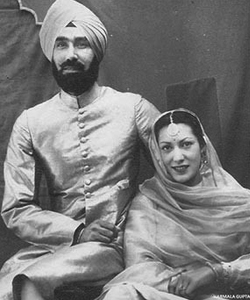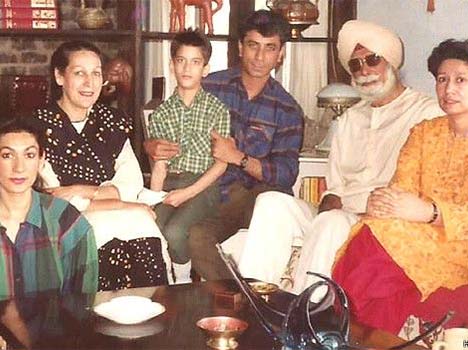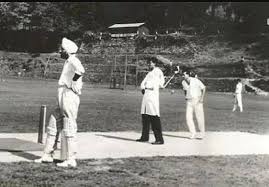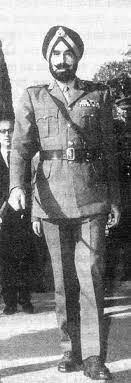Tithwal Diaries Part III : The Legend called Lieutenant General Harbaksh Singh
- Soldier Stories Of Kashmir

- May 31, 2021
- 3 min read
Military commanders like Lieutenant General Harbaksh Singh go in history inscribed in gold for their exemplary flair becomes role model for future leaders to come.
Harbaksh Singh was born on 01 October 1913 in a wealthy peasant family, the youngest of seven siblings, in Badrukhan village near Sangrur, the capital of the Jind state. His father, Dr Harnam Singh, was the first person form the village to become a Doctor.

Harbaksh Singh was commissioned on 15 July 1935 and started his career with a year’s post-commission attachment with the 2nd Battalion, Argyll and Sutherland Highlanders, then stationed at Rawalpindi. It was standard practice for newly commissioned Indian officer to be initially attached to a British regiment before being sent to an Indian unit. After a year’s attachment with the Highlanders, Harbaksh joined the 5th Battalion, 11th Sikh Regiment (previously 47th Sikhs) at Aurangabad, on 19 August 1936.
In April 1939, the battalion relieved orders to move out of Razmak and prepare to move abroad, the final destination was not known, moving to Quetta by road, via Bannu to participate in World War II. Harbaksh Singh joined the Unit’s Commanders Course in Dehradun and in April 1945, was posted as the Second-in-Command of the 4th Battalion, 11th Sikh Regiment (4/11 Sikh) at Campbellpur (now Attock). In February 1947, he was selected to join the first long course at Staff College, Quetta.
After completing the Staff Course at the Staff College, he was posted as GSO-1 (operation and training), Eastern Command. In October 1947, when Lieutenant Colonel Dewan Ranjit Rai, the Commanding Officer of 1st battalion, Sikh Regiment (1 Sikh) was killed during the Kashmir operations in 1948, he although a Colonel volunteered to command the battalion (it would be pertinent to mention here that he chose to demote himself to Lt Col as the Commanding Officers those days used to Lt Col). However, he was posted as Deputy Commander of the 161 Infantry Brigade. He conducted the main battle against the raiders at Shelatang Bridge on 07 November 1947. This decisive battle, involving 1st battalion Sikh Regiment, proved to be a turning point in the war.
Lt Gen Harbaksh Singh with his family
On 12 December 1947, on hearing about the heavy casualties suffered by 1st battalion Sikh, he proceeded to Uri and took over the command of the battalion voluntarily, dropping a star form his rank. He brought back the battalion to Srinagar and began to rehabilitate it. However, even before the rehabilitation was complete, the battalion was called out to fight the enemy who had crossed the snow-clad Pharikian ki Gali and had occupied Handwara.
He led the truncated battalion, in a daring operations in which, after a series of battles, the battalion drove out the enemy form the valley. In 1948, he was promoted to the rank of Brigadier and took over the command of 163 Infantry Brigade and began advance to Tithwal. The movement forward started on 12 May 1948, and after six days, Tithwal was captured after bitter fighting. Brigadier Harbaksh Singh was awarded a Vir Chakra for his bravery and the outstanding leadership.
Thereafter, through the service he rose to the rank of Lt Gen and commanded Western Command in the Indo-Pak War of 1965. Lieutenant General Harbaksh for his stellar role and military leadership in the war was awarded Padma VIbhushan in 1966.















Comments